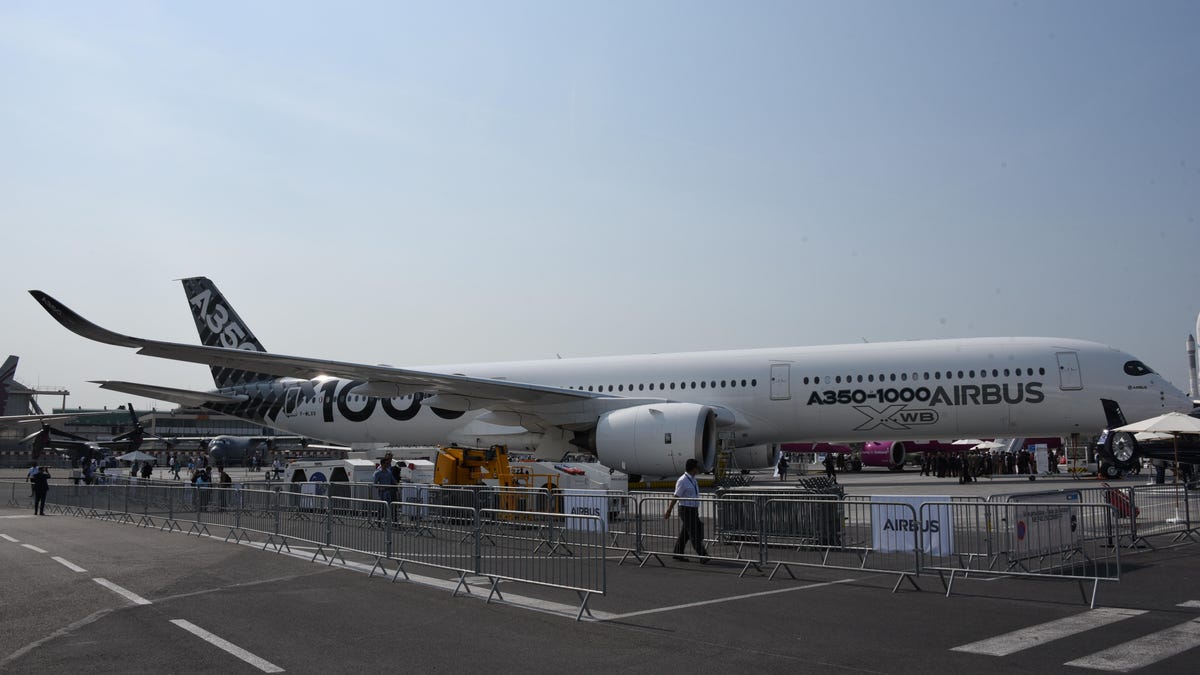Airbus unveils new aircraft and a floating black box
At the Paris Air Show, Airbus aimed to overfly Boeing with a redesigned version of its giant A380 and a concept aircraft that flies both like a helicopter and an airplane.

Just a few feet away from where arch-rival Boeing showed off its new 787-10 and 737 Max 9 airliners, Airbus set up shop at the Paris Air Show with an impressive fleet of its own commercial and military aircraft. Hit the gallery below for a full tour.
A revamped A380
Towering above everything around it was a double-decker A380, the world's largest commercial airliner. But this wasn't your standard A380 that's been plying the skies for the last decade. Rather, it was the first A380plus, a proposed new version of the aircraft that Airbus hopes will win it more A380 orders.
As CNET's Katie Collins wrote on Monday, the A380plus uses the existing A380 design, but adds new sweeping winglets to reduce fuel costs by four percent. Airbus also promises that the A380plus will have longer intervals between maintenance cycles, which will keep the airplane in the air (and carrying paying passengers) more of the time.
The ultimate goal is to make the A380 cheaper to operate, partly by adding 80 additional seats beyond what a current A380 typically accommodates. With a redesigned interior and an extra row of seats on the bottom deck (for an 11-across arrangement), the A380plus carry 575 passengers in a typical four-class configuration. How that will translate to passenger comfort remains to be seen, but on paper it sounds tight for a long-haul flight.
A321neo and A350-1000
Parked next door were two new airliners, the A321neo and the A350-1000. The A321neo is part of Airbus's new-generation A320 family of aircraft. Also designed to be more efficient and cheaper to operate -- neo stands for "New Engine Option" -- the A321neo has a lengthened fuselage over the existing A321 and "sharklet" winglets. Able to fit between 206 and 240 passengers, the A321neo started flying with airlines last month.
This is the first Paris trip for the larger A350-1000. The stretched version of the A350-900 only made its first flight last November. Carrying between 369 and 400 passengers, it promises better efficiency and cheaper operating and maintenance costs thanks to new engines and a lighter cabin built from composite materials (similar to the 787). The first delivery to Qatar Airways should happen this October.
The concept for the Airbus Racer
It's a helicopter! It's plane!
Airbus's Racer concept could be both. Unveiled in Paris, the Racer would take off and land using a standard rotor like an existing helicopter. But once it's in the air, it uses two rear-facing "pusher" rotors to help achieve lift. Once it starts flying level, the main rotor slows down, letting the wing and other rotors do much of the lifting work. Top speed should be 400 km per hour or 249 miles per hour.
The Racer is based on the Airbus X3 helicopter, but stands to improve on its predecessor by being cheaper to operate. Also, by placing the second set of rotors behind the cabin, Airbus promises a quieter ride for passengers. Final assembly of the first Racer should take place in 2019, with a first flight following that year.
The flight recorder will fit inside a waterproof case.
A floating black box
In the category of smaller and incredibly useful innovations, Airbus also announced a new "black box" flight recorder that can float on water. In the event of an airplane crashing on water, the box will be ejected from the aircraft so it can float in a protective case. A beacon will help alert search teams to its location. As a further improvement, the cockpit recording time will be increased to 25 hours (most current black boxes only record for up to 2 hours). Airbus says it will begin fitting the new black boxes into its entire range of aircraft.

